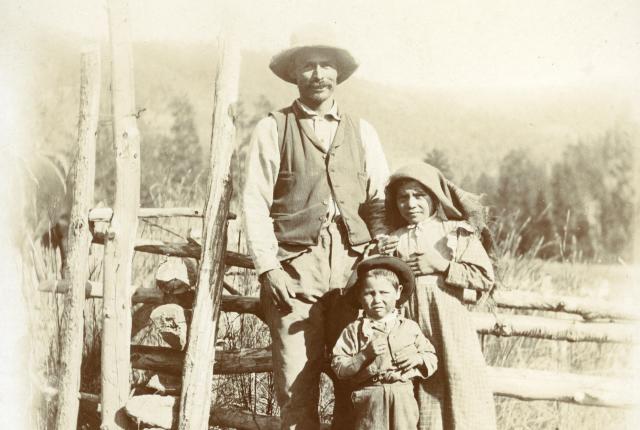GROWING UP, Fita Witte only knew life on her family’s ranch in the Estancia Valley. Born Fita Aceves, she married fifth-generation rancher Jerry Witte and worked the ranch for 60 years before retiring in 2003. A member of the New Mexico CowBelles since 1962, Witte has led the Mesilla Valley chapter as president and held state-level offices. She was president of the American National CattleWomen in 2008 and served on the Cattlemen’s Beef Board. Witte’s dedication earned her a spot in the New Mexico Farm and Ranch Heritage Museum’s Her Land: Women in Agriculture rotating exhibit, on view through this fall. Witte now watches her grandchildren work toward the future of agriculture.
I WAS BORN IN 1942 at a hospital in Albuquerque. My mother was born on the ranch. She’s a Schubert of German and Hispanic origin. My dad was a Chimayó weaver. My two brothers learned how to weave, but the yarn irritated my allergies.
On the ranch, we looked after the cows, horses, chickens. We even had pigs once. I liked watching the piglets. Lord, there were many times I fell off a horse and got run over by a cow.
We sold the cattle. We ate some of them. We had a big garden. I didn’t like hoeing weeds, but you do it or you don’t eat. Mother canned all our vegetables. I freeze stuff. If we had to depend on my garden to live, we’d starve. My mother had a green thumb. I guess mine fell off.
We were isolated. I didn’t know people didn’t work on ranches. Hell, we women didn’t even need to burn our bras to do the work. In high school, I worked a summer job at a desk. That did not impress me. I wanted to be outdoors, working with animals, riding horses, gathering eggs.
When we got married, Jerry was working on a Santa Fe ranch. Then, after five years in Arizona, we ran the Witte Ranch, on Rowe Mesa, between Las Vegas and Santa Fe. Every day, you had a wonderful sunrise. You looked over at the calves and felt happy to see them bouncing around. Life was good.
My boys started riding horses and working with cattle at a young age. I’m glad we instilled farming and ranching in our children.
My biggest accomplishment is informing the public on where their food comes from. Without farmers and ranchers, we’re not going to eat.
Read more: Al Hurricane Jr. continues a tradition that moves our feet—and our souls.
GROWTH POTENTIAL
Experience New Mexico’s farming and ranching heritage at these sites.
New Mexico Farm and Ranch Heritage Museum. The 47-acre museum in Las Cruces tells the state’s agricultural history through the eyes of real people across many cultures. nmfarmandranchmuseum.org
New Mexico State Fair. Since 1938, the fair has been the place to see top livestock, rodeo competitors, and food growers. statefair.exponm.com
El Rancho de las Golondrinas. “We maintain historic lifeways and traditional agricultural techniques that visitors can see and physically engage with, getting hands-on with history,” says museum director Daniel Goodman. golondrinas.org



